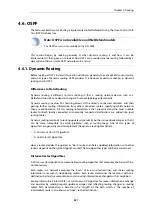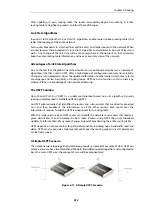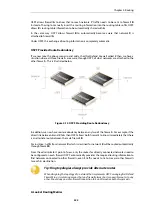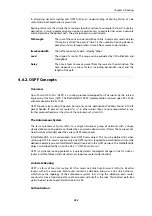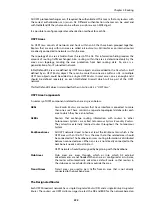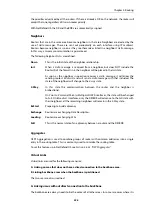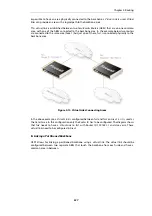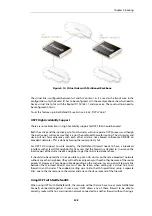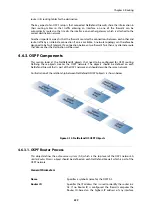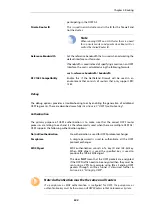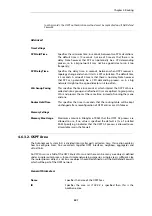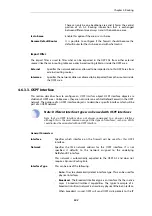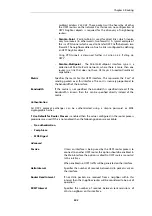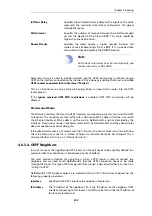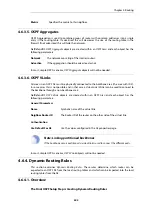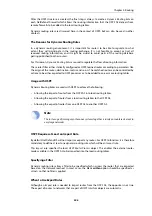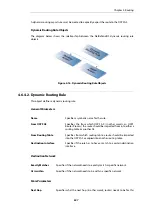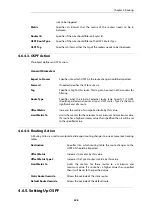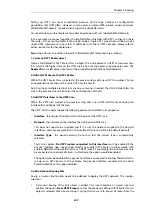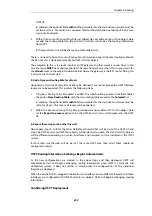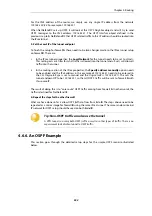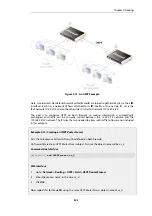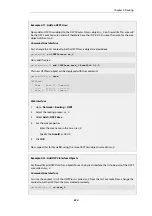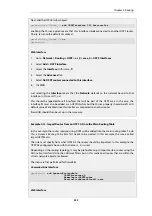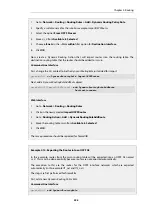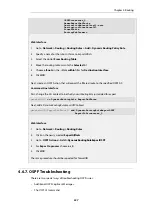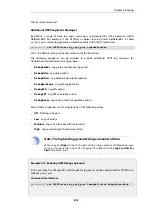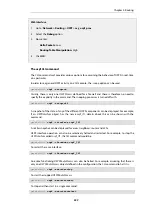
Metric
Specifies the metric to this neighbor.
4.6.3.5. OSPF Aggregates
OSPF Aggregation is used to combine groups of routes with common addresses into a single
entry in the routing table. If advertised this will decreases the size of the routing table in the
firewall, if not advertised this will hide the networks.
NetDefendOS
OSPF Aggregate
objects are created within an
OSPF Area
and each object has the
following parameters:
Network
The network consisting of the smaller routers.
Advertise
If the aggregation should be advertised or not.
In most, simple OSPF scenarios,
OSPF Aggregate
objects will not be needed.
4.6.3.6. OSPF VLinks
All areas in an OSPF AS must be physically connected to the backbone area (the area with ID
0
).
In some cases this is not possible and in that case a
Virtual Link
(VLink) can be used to connect to
the backbone through a non-backbone area.
NetDefendOS
OSPF VLink
objects are created within an
OSPF Area
and each object has the
following parameters:
General Parameters
Name
Symbolic name of the virtual link.
Neighbor Router ID
The Router ID of the router on the other side of the virtual link.
Authentication
Use Default For AS
Use the values configured in the AS properties page.
Note: Linking partitioned backbones
If the backbone area is partitioned, a virtual link is used to connect the different parts.
In most, simple OSPF scenarios,
OSPF VLink
objects will not be needed.
4.6.4. Dynamic Routing Rules
This section examines
Dynamic Routing Rules
. These rules determine which routes can be
exported to an OSPF AS from the local routing tables and which can be imported into the local
routing tables from the AS.
4.6.4.1. Overview
The Final OSPF Setup Step is Creating Dynamic Routing Rules
Chapter 4: Routing
345
Summary of Contents for NetDefendOS
Page 30: ...Figure 1 3 Packet Flow Schematic Part III Chapter 1 NetDefendOS Overview 30 ...
Page 32: ...Chapter 1 NetDefendOS Overview 32 ...
Page 144: ...Chapter 2 Management and Maintenance 144 ...
Page 284: ...Chapter 3 Fundamentals 284 ...
Page 392: ...Chapter 4 Routing 392 ...
Page 419: ... Host 2001 DB8 1 MAC 00 90 12 13 14 15 5 Click OK Chapter 5 DHCP Services 419 ...
Page 420: ...Chapter 5 DHCP Services 420 ...
Page 573: ...Chapter 6 Security Mechanisms 573 ...
Page 607: ...Chapter 7 Address Translation 607 ...
Page 666: ...Chapter 8 User Authentication 666 ...
Page 775: ...Chapter 9 VPN 775 ...
Page 819: ...Chapter 10 Traffic Management 819 ...
Page 842: ...Chapter 11 High Availability 842 ...
Page 866: ...Default Enabled Chapter 13 Advanced Settings 866 ...
Page 879: ...Chapter 13 Advanced Settings 879 ...

